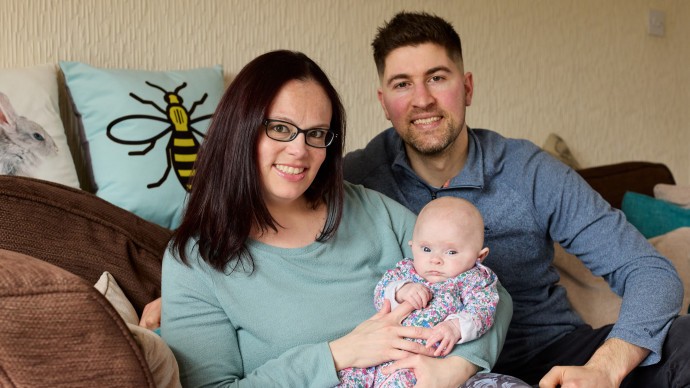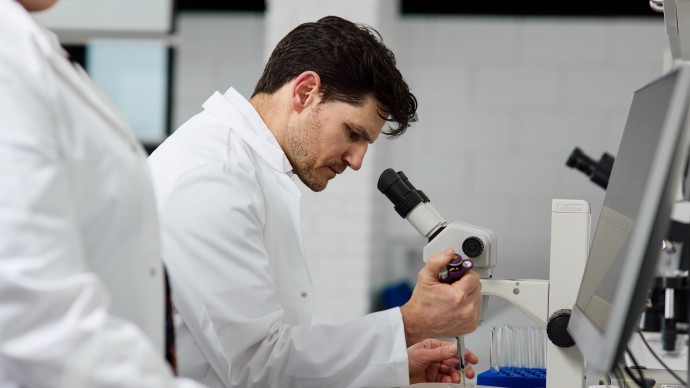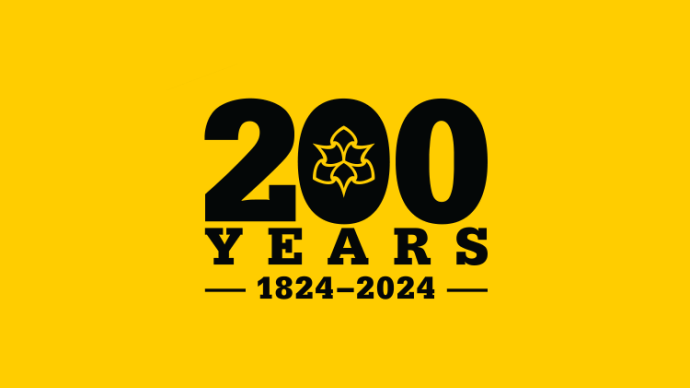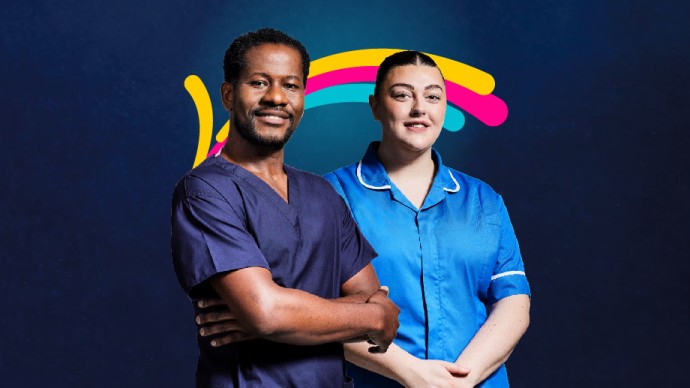The baby girl born from IVF
IVF family case study

Standfirst
Over 50,000 people go through IVF in the UK each year in the hope of starting or adding to their family. For those who succeed and take home a baby, it’s a dream come true.
Manchester Metropolitan University is the country’s only formal training provider for the scientists who become embryologists and andrologists in fertility clinics.
Main story
Alexandra and Luke Fletcher from South Manchester had help from science to get their little girl, Evie.
After trying the fertility-enhancing drug Letrozole, IVF was the next step for the couple.
The first cycle didn’t work. After taking some time to heal from the disappointment, they started a new round, which gave them their daughter.
“She is a very wanted child, and we are so glad to have her with us,” Alexandra said.

Going through the process of IVF is tough. It’s expensive, and the success rate is low, decreasing with the mother’s age. It is an emotional rollercoaster that can leave couples feeling isolated from family and friends who have experienced ‘normal’ pregnancies. Male partners sometimes feel sidelined and don’t always have anyone to talk to.
After going through the process, Alexandra and Luke urge others to seek help early if they are worried about their fertility and to not give up.
Luke added: “Don’t take it personally if it doesn’t work straight away, it’s down to science. Talk to others who have gone through it because it does give you that glimmer of hope.
“You also notice that more people are going through IVF than you realise and that there is still some stigma with discussing it. It can feel like a failure to be going through IVF, but it is an opportunity to do something good.”
Creating new life
Evie was created using a method called intracytoplasmic sperm injection (ICSI), which involves the sperm being injected directly into the egg. It’s a precise surgical procedure on a microscopically small scale. The embryologists performing it are highly skilled and have what Alexandra refers to as the “most steady hands in the world.”
She added: “Without them, Evie wouldn’t exist.” She also described the important relationship between the embryologist and patient: “They were always open to me asking questions, and they were able to explain the quality grading for the embryo, which helps in understanding the likelihood of a successful pregnancy.”
We’re so thankful for what they do, for their training, and the time they have put in. They’re incredible. They’re bringing hope to people who need it.
Embryologists monitor the progress of embryos until the point that the embryo is ready to be transferred to the mother’s womb. This is usually three or five days after fertilisation. The embryologist is present in the theatre for the procedure.
It’s a big milestone following weeks or even months of treatment. In seconds, the embryo passes through a catheter into the uterus, and a tiny flash of light is seen on a screen, signalling the start of new life.
A pregnancy test is taken two weeks later to confirm if the process has worked. The pregnancy rate from a fresh embryo transfer stood at 29% in 2021.
The harsh reality is that not everyone gets to take home a baby. Alexandra and Luke describe themselves as the lucky ones: “We were one of those couples that didn’t know if we’d ever have a happy ending. It’s the miracle of science that has given us our daughter. Without the embryologists and the andrologists, dreams don’t come true.
“We’re so thankful for what they do, for their training, and the time they have put in. They’re incredible. They’re bringing hope to people who need it. Without their skills, it wouldn’t happen, and we want to thank them for helping people to have a family.”
Discover more about IVF
-
![Dr Michael Carroll using a pipette and petri dish to do a sample analysis using the microscope]()
Leading the way for new life
Find out more
Listen to our podcast

MetCast: How we transform health
Hear from Alexandra and Luke who share their IVF journey in our podcast, MetCast.About 200 years
Manchester Met celebrates two centuries of driving progress through excellent education and research.
-
![200 years 1824-2024]()
200 years
Find out more -
![Two nurses standing together and smiling]()
Transforming health
Find out more



